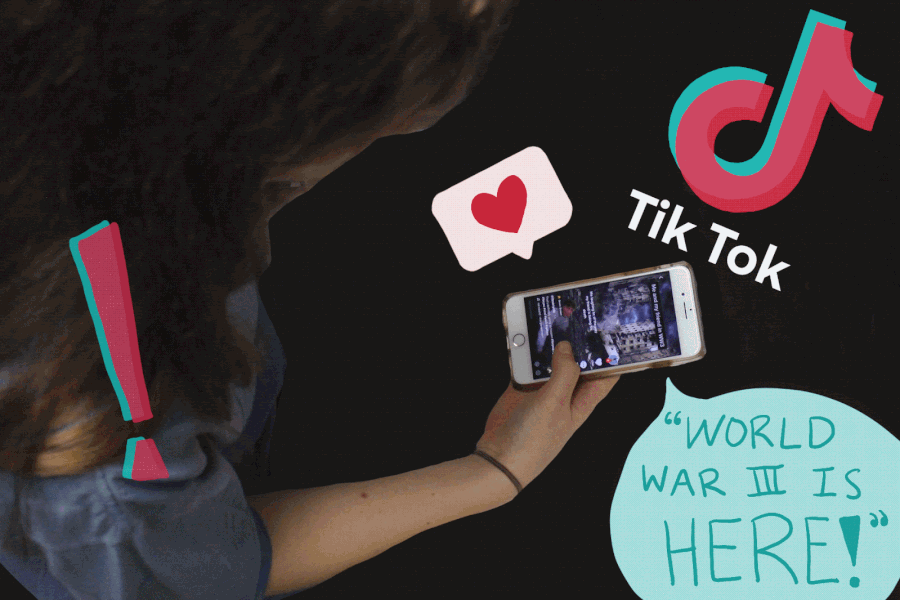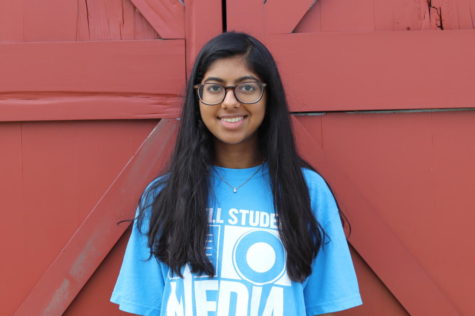Integration of memes and politics
Why current culture distracts from the truth
Memes have increased in popularity with the growth of social media sites such as Instagram and TikTok, often addressing issues in the media. The Sidekick staff writer Anvitha Reddy thinks memes trivialize and misinform people on current events.
January 23, 2020
In an increasingly social-media oriented world, memes, ranging from TikTok to Twitter, can often blur what’s fact and what’s fiction.
On Jan. 3, President Donald Trump launched an attack which killed Iranian general Qasem Solemani. Solemani was responsible for the deaths of hundreds of American soldiers.
Across social media, teenagers responded to the conflict with speculation of a third World War.
While this conflict could be serious, Generation Z was quick to assume the assassination would escalate to a full world war. The false ideas quickly spread to several social media platforms, namely TikTok and Twitter. Speculation of a military draft, nuclear conflict and human extinction were all made in social media with no evidence to support it.
“The idea of World War III is not really based on any sort of fact,” Coppell High School AP U.S. history teacher Kevin Casey said.
However, more than exaggerating a situation, memes misinform teenagers and perpetuate a culture that distracts from the real situation.
While thinking about the potential of a world war, people trivialize the actual conflict.
Further than just World War III, there have also been jokes about Vice President Mike Pence putting members of the LGBTQ+ community in concentration camps all over the Internet. Though Pence has made no such claim, the memes went viral, creating unnecessary fear and an avenue for homophobia to further escalate.
When teenagers find a trending joke or meme that exaggerates a current conflict, they often believe it, leading to a lack of awareness of the actual situation.
Memes can often act as a substitution of real news; teenagers can feel “aware” of politics without looking deeper, which can lead to a large spread of misinformation and insinuate more fear.
However, the spread of memes can draw attention to current events, which might not have resonated with the younger audience.
“The culture introduces the news to teenagers quicker,” CHS senior Ronak Indurti said. “I would not have known about [the assassination of Solemani] as early as I did if I didn’t have TikTok.”
Indurti’s TikTok about a World War III draft gained thousands of views and likes.
His approach to the subject was humorous, noting the unlikelihood of the war, and Indurti made his TikTok to connect to Indian viewers.
“I wanted to add a different perspective to the World War III memes,” Indurti said. “They were predominantly made by white people so I thought it would be funny if I added an Indian joke in there.”
However, just because the war is unlikely, it does not mean the state of U.S.-Iranian relations is good.
“The relations between the U.S. and Iran have always been problematic since 1979,” Casey said. “At any point in history, there is a great deal of animosity between the two countries.”
In the case we do go to war, memes draw attention to the wrong groups. If the United States goes to war with Iran, the impoverished children of Iran are most likely to be affected, as the war would likely hit close to them. The harsh reality of a war will most likely not occur, but if it does, the real individuals who would be affected aren’t being considered.
Beyond several instances of exaggerated politics taking over the media, teenagers often look to social media first, and without further searches to other outlets, this generation could be severely misinformed.
Instead of limiting their exposure to politics to just trending jokes on Twitter, teenagers should educate themselves further and look past the assumptions made by peers.
Memes should be just for enjoyment, not as a supplement to actual information we may need.
Follow Anvitha Reddy (@anvithareddytx) and @CHSCampusNews on Twitter.













Nishant Medicharla • Jan 28, 2020 at 12:44 am
Loved how you took a timely topic and expanded on it to showcase a real issue we teenagers face today. Great job Anvitha!
Anthony Cesario • Jan 25, 2020 at 10:21 am
I love this story, Anvitha! Very timely and important.